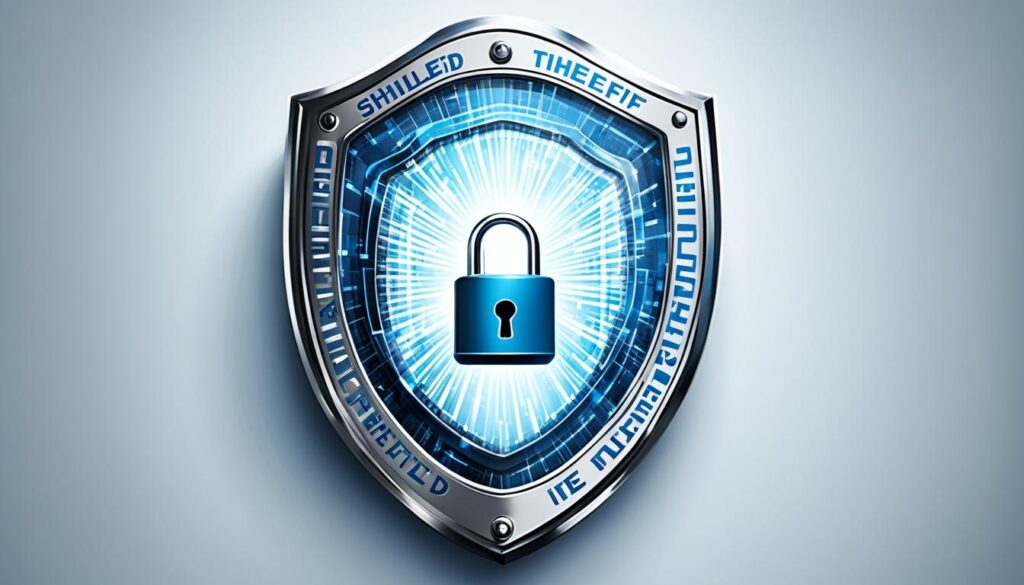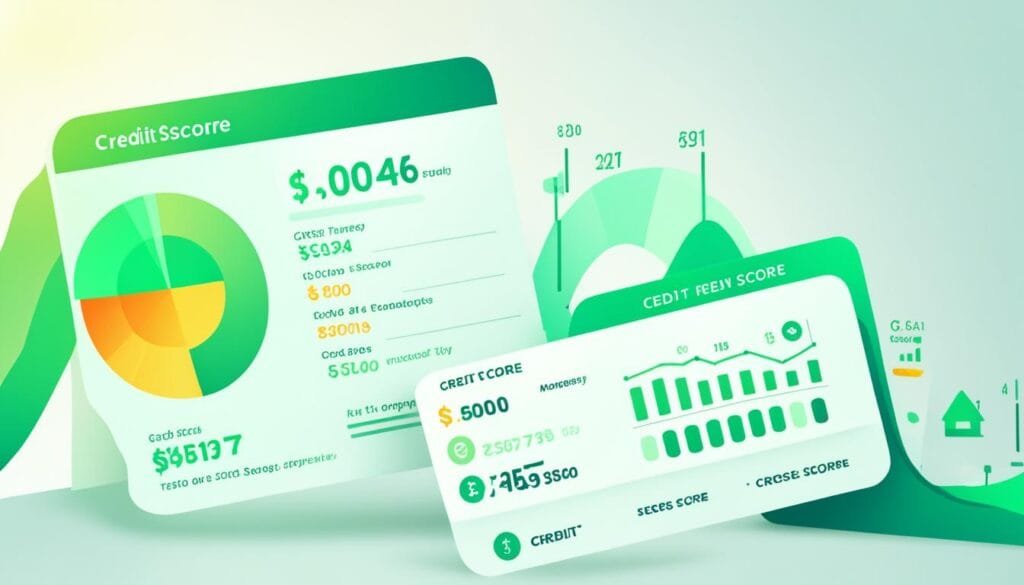Reports of lost laptops or security breaches at financial institutions can spark fears about identity theft. Use this checklist to safeguard your sensitive information and help keep identity thieves at bay. Protect usernames, passwords, and PINs by creating strong, unique combinations. Safeguard your computer with firewalls and up-to-date security software. Be smart when accessing your brokerage account online by using a secure web connection. Use wireless connections wisely by securing your wireless connection at home and disabling it in public places. Avoid responding to emails that ask for personal information and keep your Social Security number private. Keep an eye on your finances by monitoring your account statements and checking your credit report regularly. Contact your financial institution if you suspect your account has been compromised.
Key Takeaways:
- Protect usernames, passwords, and PINs with strong, unique combinations.
- Secure your computer with firewalls and up-to-date security software.
- Use a secure web connection when accessing your brokerage account online.
- Safeguard your wireless connection at home and disable it in public places.
- Avoid responding to emails that ask for personal information.
Keep your Social Security number private and monitor your account statements and credit report regularly. If you suspect your account has been compromised, contact your financial institution immediately. By taking these proactive steps, you can secure your finances and protect yourself from identity theft.
What Is Identity Theft?
Identity theft is a crime where someone illegally gains access to your personal information for financial gain. Criminals can use this stolen information for various fraudulent activities, such as:
- Withdrawing cash from your bank account.
- Making unauthorized purchases.
- Applying for loans or new accounts in your name.
- Filing fraudulent tax returns.
- Using your health insurance.
Personal information that is susceptible to theft includes:
- Social Security number
- Phone number
- Date of birth
- Credit card and bank account numbers
- Driver’s license or passport number
Recognizing signs of identity theft is crucial in taking immediate action to mitigate the damage. Some common signs to look out for include:
- Unauthorized charges on your accounts.
- Declined credit applications that you did not initiate.
- Calls from collection agencies for debts you don’t owe.
Being aware of these red flags can help you detect identity theft early and take the necessary steps to protect yourself.
Protecting Yourself Against Identity Theft
“Identity theft is a serious crime that can have devastating consequences for its victims. By taking proactive steps to safeguard your personal information and staying vigilant, you can minimize the risk of falling victim to this widespread problem.” – John Smith, Identity Theft Expert
It’s essential to take proactive measures to protect yourself against identity theft. Some key steps you can take are:
- Keep your personal information secure
- Use strong, unique passwords for your accounts
- Avoid sharing personal information unless necessary
- Regularly monitor your accounts and credit reports
- Report any suspicious activity immediately
By following these steps, you can significantly reduce the risk of falling victim to identity theft and protect your financial well-being.
How to Help Prevent Identity Theft
Preventing identity theft is crucial in safeguarding your personal and financial information. By taking proactive measures, you can minimize the risk of falling victim to this crime. Here are some actions you can take:
- Password Protection: Ensure the security of your mobile devices by password-protecting them. Use strong passwords and consider enabling two-factor authentication for your accounts.
- Secure Wi-Fi: When using public Wi-Fi, protect your data by using a secure Virtual Private Network (VPN).
- Fraud Alerts: Sign up for fraud alerts on your financial accounts. This will allow you to receive notifications of any suspicious activity, enabling you to take immediate action.
- Stay Informed: Stay updated on common scams and fraud schemes. Being aware of these tactics can help you avoid falling prey to identity thieves.
- Monitor Accounts: Regularly monitor your financial accounts for any unauthorized activity. Review your bank and credit card statements carefully and report any discrepancies immediately.
- Check Credit Report: Obtain a copy of your credit report and review it regularly. Look for any unfamiliar accounts or activities, which may indicate identity theft.
- Report Identity Theft: If you suspect or discover identity theft, report it to your financial service provider and the Federal Trade Commission (FTC).
“Preventing identity theft requires a proactive approach. By implementing these preventive measures, you can significantly reduce the risk of falling victim to this crime.”
Remember, the key to preventing identity theft is to stay vigilant and proactive in protecting your personal information. By following these steps, you can help ensure your financial security and peace of mind.

How to Report Identity Theft
If you become a victim of identity theft, it is crucial to take immediate action to minimize the impact and protect your financial wellbeing. Here are the steps you should follow to report identity theft:
- Contact your financial service provider: Notify your bank, credit card company, or any other financial institution immediately. By reporting the theft to your financial service provider, you can freeze your accounts, prevent unauthorized transactions, and begin the process of recovering your stolen funds.
- Contact the Federal Trade Commission (FTC): Reach out to the FTC to document the incident and access resources for creating a personal recovery plan. The FTC is a valuable resource for victims of identity theft, providing guidance, support, and tools to help you navigate this challenging situation. You can report the theft online at www.ftccomplaintassistant.gov or call their toll-free number at 1-877-ID-THEFT (1-877-438-4338).
By reporting identity theft to both your financial service provider and the Federal Trade Commission, you play a crucial role in the investigation and resolution of the crime. It helps protect not only your financial interests but also assists in preventing future incidents of identity theft.
Remember, taking prompt action will help minimize the potential damage caused by identity theft and increase the chances of recovering your stolen funds.
Steps to Report Identity Theft
| Step | Description |
|---|---|
| 1 | Contact your financial service provider |
| 2 | Contact the Federal Trade Commission (FTC) |
Reporting identity theft is essential for safeguarding your financial wellbeing and ensuring that appropriate measures are taken to investigate and resolve the crime. Taking immediate action will help protect your personal and financial information and mitigate the potential consequences of identity theft.
Keep Your Personal Information Secure
Keeping your personal information secure is crucial in protecting yourself from identity theft. By following these best practices, you can safeguard your sensitive data and minimize the risk of unauthorized access.
Safe Document Storage
Store documents containing personal information, such as Social Security cards, passports, and financial statements, in a secure place at home and work. Consider using a locked filing cabinet or a safe deposit box to prevent unauthorized access.
Limit What You Carry
Avoid carrying unnecessary personal information with you, such as your Social Security card or Medicare card. Only bring the essential documents and cards you need for a specific outing. This reduces the chances of losing them or becoming a target for theft.
Shred Documents
Dispose of documents that contain sensitive information by shredding them. This includes old bank statements, credit card bills, and any other paperwork containing personal or financial details. Shredding ensures that this information cannot be retrieved or used maliciously.
Secure Passwords
Create strong, unique passwords for all your online accounts. Use a combination of numbers, letters (both uppercase and lowercase), and special characters. Avoid using common, easily guessable passwords such as birthdates or sequential numbers. Additionally, consider using a password manager to securely store and organize your passwords.
Be Mindful of Your Mail
Be cautious of incoming mail and be aware of when you should expect certain documents. If you notice any delays or missing mail, it could be a sign of potential identity theft. Promptly report any suspicious activity to the appropriate authorities.
Inspect Your Credit Card Receipts
Review your credit card receipts carefully, ensuring that they match your purchases. Any unauthorized charges should be reported to your credit card issuer immediately to prevent further fraudulent activity.
By implementing these measures, you can enhance your personal information security and significantly reduce the risk of falling victim to identity theft.

Monitor Your Credit Reports, Bank and Credit Accounts
One effective way to protect against identity theft is to regularly monitor your credit reports, bank accounts, and credit accounts. By staying vigilant and reviewing these financial documents, you can quickly identify any unauthorized activity and take appropriate action.
Start by ordering a free copy of your credit report from the major credit bureaus. Examine the report carefully, looking for any signs of fraudulent accounts, unusual transactions, or unfamiliar inquiries. If you spot any suspicious activity, immediately contact the credit bureau and report the incident.
Additionally, it is crucial to open and read your bank account and credit card billing statements. Check for any unfamiliar charges, withdrawals, or discrepancies in balances. If you come across any suspicious transactions, contact your financial institution immediately to report the issue and prevent further unauthorized access.
It’s also important to be aware of when your statements typically arrive. If you notice a missing statement, it could be a red flag for potential identity theft. Reach out to the respective company to inquire about the missing statement and ensure that your account information remains secure.
Besides credit reports and bank statements, regularly review your IRS and Social Security accounts for accuracy. Verify that the information matches your records and that no fraudulent activity has occurred. If you discover any discrepancies, promptly report them to the relevant authorities.
By monitoring your credit reports, bank accounts, and credit accounts, you can proactively detect identity theft and take immediate action to protect your financial well-being.
Credit Monitoring Checklist:
- Order a free copy of your credit report and review it for any unauthorized activity.
- Open and read your bank account and credit card billing statements, checking for unfamiliar charges or withdrawals.
- Contact the company if your statements are missing.
- Regularly review your IRS and Social Security accounts for accuracy.
Example of Credit Monitoring Checklist:
| Task | Step |
|---|---|
| Order Credit Report | Go to www.annualcreditreport.com and request a free copy of your credit report from each major credit bureau. |
| Review Credit Report | Examine the report for any unauthorized accounts, unusual transactions, or unfamiliar inquiries. |
| Open Bank Statements | Regularly open and read your bank account and credit card billing statements. |
| Check for Unauthorized Charges | Look for any unfamiliar charges, withdrawals, or discrepancies in balances. |
| Contact Missing Statements | If you notice a missing statement, reach out to the respective company to inquire about it. |
| Review IRS and Social Security Accounts | Verify the accuracy of your information and check for any fraudulent activity. |
How Can Identity Theft Protection Help in Identity Theft Recovery?
Identity theft recovery strategies can help individuals navigate the complex process of reclaiming their identity and securing their personal information. By having a comprehensive identity theft protection plan in place, individuals can mitigate the damages caused by identity theft and recover more quickly and effectively.
Conclusion
Identity theft can happen to anyone, but by implementing the recommended safeguards, you can reduce the risk of becoming a victim. Taking steps to secure your personal information is vital in protecting yourself from potential harm. Be proactive in preventing identity theft by creating strong and unique passwords, using firewalls and security software, and being cautious with sharing personal information online.
It is crucial to regularly monitor your accounts and credit reports to promptly identify any unauthorized activity. By staying vigilant, you can catch potential identity theft early and take immediate action to mitigate the damage. Remember to report any suspected identity theft to your financial service provider and the Federal Trade Commission. They can assist you in resolving the issue and help you create a personal recovery plan.
Stay vigilant and prioritize your identity theft protection. By implementing the strategies outlined in this article, you can protect your financial well-being and maintain peace of mind. Identity theft is a serious threat, but with the right precautions and continuous monitoring, you can significantly reduce your risk and keep your personal information safe.
FAQ
What is identity theft?
Identity theft is a crime where someone illegally gains access to your personal information for financial gain. They can then use this information to withdraw cash from your bank account, make unauthorized purchases, apply for loans or new accounts in your name, file fraudulent tax returns, or use your health insurance.
How can I help prevent identity theft?
To prevent identity theft, you should password-protect your mobile devices, use strong passwords and two-factor authentication for your accounts, use a secure Virtual Private Network (VPN) when using public Wi-Fi, sign up for fraud alerts on your financial accounts, stay informed about common scams, and regularly monitor your account activity and credit report.
What should I do if I suspect identity theft?
If you suspect identity theft, you should contact your financial service provider immediately to report the theft. You should also contact the Federal Trade Commission to document the incident and gain access to tools for creating a personal recovery plan. Reporting identity theft helps protect your financial wellbeing and assists in the investigation and resolution of the crime.
How do I keep my personal information secure?
To keep your personal information secure, you should store documents with personal information in a safe place at home and work, limit what you carry, avoid sharing personal, financial, or health information unless you have a trusted relationship with the requestor, inspect your credit card receipts, shred documents that contain sensitive information, and use strong, unique passwords for your accounts.
How should I monitor my credit reports and accounts?
You can monitor your credit reports and accounts by ordering a free copy of your credit report and reviewing it for any unauthorized activity. You should also open and read your bank account and credit billing statements, checking for any unfamiliar charges or withdrawals. Additionally, regularly review your IRS and Social Security accounts for accuracy to ensure no fraudulent activity has occurred.
Source Links
- https://www.texasattorneygeneral.gov/consumer-protection/identity-theft/help-prevent-identity-theft
- https://www.finra.org/investors/protect-your-money/protect-your-identity/identity-theft-prevention-checklist
- https://www.pnc.com/insights/personal-finance/protect/tips-for-protecting-your-finances-and-reputation-from-identity-t.html

